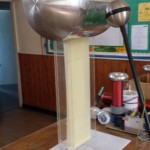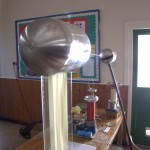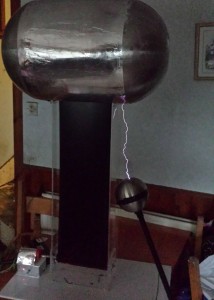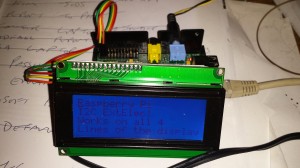Yes, I know, its was taught to you at school. Me too. I even have a book that has separate chapters of static electricity and conventional current electricity. So what is the problem, well it took me years to work out that there is no such distinction. Its all electricity. Static electricity on the terminal of a VDG sphere doesn’t suddenly transform in to current electricity when it is discharged and current electricity doesn’t transform into static when its stored in a capacitor.. The same rules must apply to both.
To use the water analogy, water is the same if its in a lake or in a stream.
I’m my mind I can’t think of any situation where static electricity exists. Capacitors, Van de graph terminals (also capacitors) all store charge. But non are static, there is always leakage current. To charge these devices there must be current.
So is its not static electricity, its stored electricity (charge) or conventional electricity(current) , both or just electricity.
Reading Physics books there appears to be a whole set of laws that govern each “type” of electricity, but in reality the effects are always there. One of the problems is that ‘static’ electricity is generally taught with high DC voltages, current electricity is taught with low DC voltages. The effects you see are dominated by the voltage, for example.
Electrical attraction occurs in all capacitors. But at high voltage the effects are much larger and so easier to see.
Resistive heating has a larger effect at low voltages, but is harder to see at high voltages (which is why transmission lines are high voltages)
The more you work on high voltage, or with high frequency electricity the more these effects become apparent.
So banish ‘static’ as a description and replace with high or low voltage, charge or current this is really what is going on.
Bill Beaty’s Thoughts on this What’s the Difference Between ‘Static’ Electricity and ‘Current’ Electricity?






